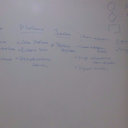No evidence of "obesity paradox" after treatment with drug-eluting stents in a routine clinical practice: results from the prospective multicenter German DES.DE (German Drug-Eluting Stent) Registry.
Түлхүүр үгс
Хураангуй
OBJECTIVE
The aim of this study was to compare clinical outcomes among unselected patients stratified in categories of body mass index, who underwent percutaneous coronary intervention (PCI) with either sirolimus-eluting or paclitaxel-eluting stents.
BACKGROUND
Overweight and obesity are often considered risk factors for cardiovascular events. However, recent studies have associated obesity with better outcomes after PCI with bare-metal stents. Data from routine clinical practice using drug-eluting stents (DES) focusing on this "obesity paradox" are not available.
METHODS
We used data from DES.DE (German Drug-Eluting Stent) registry to compare in-hospital and 1-year outcomes among unselected patients undergoing PCI with DES implantation. Primary endpoints were the rate of major adverse cardiac and cerebrovascular events (MACCE) (defined as the composite of death, myocardial infarction, and stroke) and target vessel revascularization (TVR).
RESULTS
Between October 2005 and 2006, 1,436 normal weight, 2,839 overweight, and 1,531 obese patients treated with DES were enrolled at 98 sites. Baseline clinical parameters were more severe in overweight and obese patients; 1-year follow-up comparison between groups revealed similar rates of all-cause death (3.3% vs. 2.4% vs. 2.4%; p=0.17), MACCE (7.1% vs. 5.6% vs. 5.5%; p=0.09), and TVR in survivors (10.9% vs. 11.7% vs. 11.6%; p=0.56) in normal weight individuals compared with overweight or obese patients. Such results persisted after risk-adjustment for heterogeneous baseline characteristics of groups and were independent of the types of DES.
CONCLUSIONS
DES.DE revealed no evidence of "obesity paradox" in a routine clinical practice using DES.



